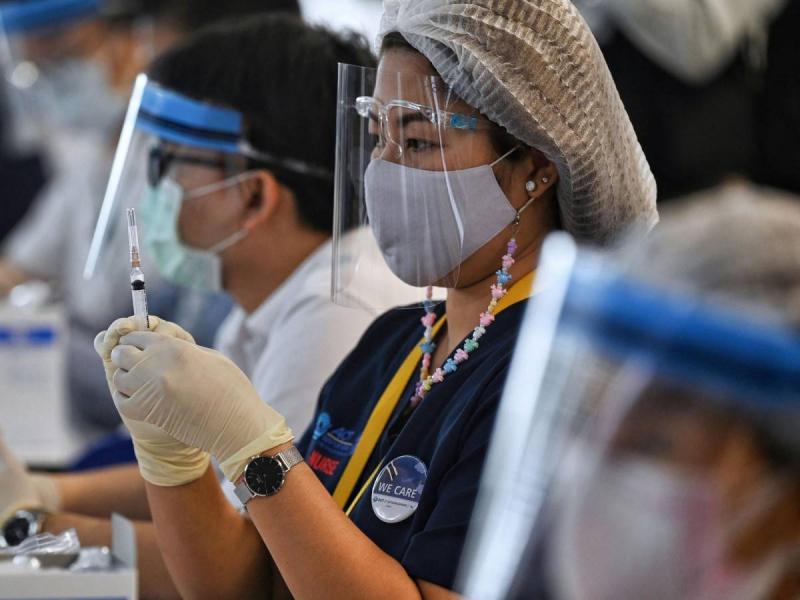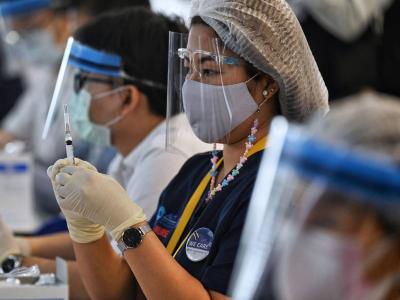A sense of complacency regarding the efforts to combat the coronavirus pandemic, coupled with populist policies and weak infrastructure, has led to a devastating second wave of COVID-19 in India, a catastrophe affecting millions and causing destruction beyond its borders due to a new more infectious variant. However, none of these failures are unique to this country; why aren’t we paying more attention to sudden mutations of the virus in neighboring areas and places that are not better equipped to handle sudden surges or track new variants?
#### The COVID-19 Outbreak in Southeast Asia
Alarm bells should be ringing across Southeast Asia. The situation is dire in Thailand and Malaysia, and to a lesser extent in Vietnam, which have all recorded daily cases that are far worse than previous waves of the pandemic. Indonesia is on track to register 6,000 new daily cases, and the Philippines reported over 6,800 cases on Saturday. It is too early to determine whether this is merely a temporary spike amid a recent downward trend or something more severe. However, the biggest concern should be the poorer corners of the region that have so far escaped the worst. Cambodia saw a sharp rise last month to the point that leader Hun Sen warned that the country was "on the brink of death." New infections have eased, but the total number of cases is currently over 24,000, compared to just a tenth of this number in early April. Laos had a total of fewer than 50 cases at the beginning of April, but official numbers have now surpassed 1,700 cases. In Myanmar, it is difficult to ascertain the extent of the spread, given that testing has nearly ceased since the military coup in February.
#### The Economy Suffers from COVID-19
All of this comes at a time when economies and families are reeling from the ongoing effects of more than a year of restrictions aimed at stemming the spread of the virus, and few governments are eager to repeat the lockdowns of 2020. Vaccination rollouts have been slow, and borders are open for free movement, with cases already emerging in China. Laos has nearly 5,000 kilometers (about 3,100 miles) of borders with five neighbors, and early cases in this wave included people crossing the Mekong River from Thailand. There are also wealthier countries like Singapore and Taiwan, which were seen as safe havens from the pandemic due to their success in controlling outbreaks but are currently grappling with the widening spread of the disease, imposing stricter restrictions. Japan is in complete disarray due to a surge in COVID-19 cases, with one of the lowest vaccination rates among wealthy countries as the Olympics loom, but it faces opposition from over 80% of the population against holding the games.
#### South America Suffers Too
Asia is not alone in this matter, as authorities in South America are struggling with new surges and concerning variants, this time from Brazil, where the satirical president has left hospitals in distress. This is a stark example, and not the first of its kind during this pandemic, of how we continue to repeat the same mistakes. Two clear lessons should be taken into account. First: simply put, there is no way to control COVID-19 without vaccines. This is why parts of Europe and the United States are now seeing fewer cases and discussing vacation plans (thanks to the rapid pace of vaccinations). In contrast, Thailand wants to reopen the tourist island of Phuket, but has vaccinated just over 1% of its population and is experiencing severe outbreaks in prisons so much so that it is considering granting pardons to inmates.
#### The Need for Expanded Vaccination
Low vaccination rates have left Taiwan exposed as cases breached its defenses, a similar story in Singapore, which is vaccinating more citizens, but not enough, and both are now scrambling to vaccinate. Lyon, which had to cancel high-profile events like the World Economic Forum, is rushing to ensure all adults receive a first dose by the end of August and will extend the interval between doses to cover more people. This should serve as a warning for places where local cases are currently under control, but vaccination rates are still alarmingly low. Hong Kong has administered two vaccine doses to less than 12% of its population. Australia has moved at a slow marathon pace rather than a quick sprint, having administered enough doses to cover only 7% of its population when both must make every effort to prepare for vaccination campaigns.
#### Lack of Monitoring
A second vital lesson from India and Brazil truly highlights the cost of allowing hotspots of infection to develop unchecked, with insufficient testing capabilities and genome sequencing potential (to identify virus mutations), preventing health authorities from keeping up with the virus's evolution and acting accordingly. The absence of these elements leaves everyone blind to the realities. Take Myanmar, for example, which is already one of the hardest-hit and least prepared countries in Southeast Asia, with dilapidated hospitals, 0.7 intensive care beds, and only 0.5 ventilators per 100,000 people. In comparison, India had just over two beds, and South Korea had nearly 11 beds per 100,000 people, and the military coup has not helped achieve any of those elements, with doctors and nurses leading civil disobedience. The rate of virus testing has dropped to an average of fewer than 1,000 samples per day instead of 18,000 samples before the coup, with little hope for a comprehensive vaccination campaign.
Mutant viruses must be detected before infections explode, and we cannot overlook what is currently happening across the region. The double mutant variant seen in India was present as early as December, but it advanced unchecked. More variants are expected to emerge at this stage of the pandemic, meaning that external support and attention have become urgent.




